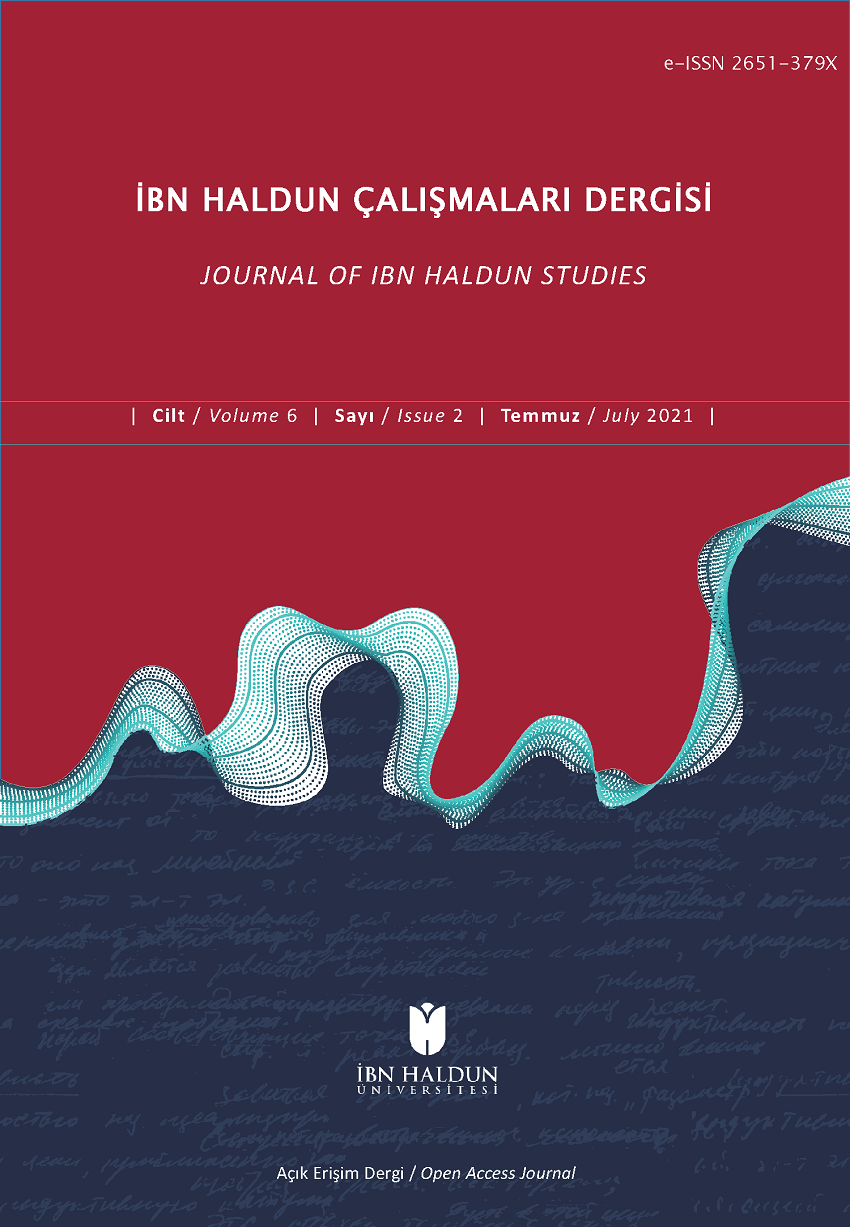Classification of Sciences and History of Islamic Philosophy
DOI:
https://doi.org/10.36657/ihcd.2021.77Keywords:
İslâm, Felsefe, Medeniyet, Kültür, İlimler Tasnifi, Islam, Philosophy, Civilization, Culture, Classification of SciencesAbstract
When Islam had offered a new perspective both politically and intellectually to the humanity at the beginning of the 7th century, Muslims have conquered important, antique, cultural centers like Damascus (15 / 636), Aleppo (h.16) and Antioch (h.17) in a short period of time. While Islam was quickly spreading in a wide geographic area, the works which contains the knowledge of ancient cultures and civilizations were translated into Arabic language. Muslim Scientists developed the ancient theoretical and practical knowledge and demonstrated an original and creative scientific model. Important works of ancient cultures were being translated at the House of Wisdom (Bayt al-Hikmah). The place provided a material opportunity for philosophical and scientific translations from the Greek civilization in that era. Islamic scholars, especially, studied the balance between theory and practice. They prioritized scientific studies based on observation and experiment. Thus the scientific knowledge which was being translated, assimilated had expanded, and a new scientific terminology created. In this context, starting with natural sciences, studies in areas like philosophy, philology and literature were carried out a worldly understanding, not theological. Muslims did not take regard the masters’ race or religion who were carrying the culture, and established teacher-student contact. They paid attention to fair criticism, academic and ethical rules. Thus they established a new concept of knowledge and science. This understanding of science was carried to the West in different ways and played an important role in the formation of the Renaissance. Each kind of knowledge, science and civilization has its own system/episteme and an internal coherence, among which there is an “incomparable” situation. If each one is examined with its own criteria, it is seen that Egypt, Babylon, Indian, Chinese, Roman, Ancient Greek and Islamic civilizations are different cultural units of the world. As a matter of fact, there are 21 different dynamic cultures in the world, and there are unique and systematic responses of creative, original views of political, religious, military and geographical areas. Examining this under ibn Khaldun's vision of cyclic and organismal history gives quite consistent results. The purpose of the text; In 610, Islam claimed a new concept of knowledge, science and civilization while it was taking its place in history. The course focuses on the confrontation of Hind, Sassanid/Persian, Chinese, Sabii cultures and the Hellenistic philosophy of ancient cultures and civilizations that synthesized ancient Greek, Byzantine, Egyptian and Babylonian cultures. How these scholars grew up and translated these works in a short time and developed them with new discoveries. In order to understand this, it will be emphasized that a qualified knowledge and philosophy of history and history of sciences should be examined. If we re-read the philosophical accumulation of humanity (perennial philosophy) formed since Adam, in the context of Muhammad's teachings; our suggestion is: We must overcome categorical distinctions about the Philosophy-Kalam and Sufism. These disciplines should be read in parallel. This can be done within the Department of Islamic Philosophy because Islamic philosophy examines the accumulation of humanity by overcoming the dilemmas of East-West and religion-philosophy or reason/revelation.
Downloads
Published
How to Cite
Issue
Section
License
Copyright (c) 2021 Mevlüt Uyanık

This work is licensed under a Creative Commons Attribution 4.0 International License.
In case an article is accepted for publication it is allowed to combine the article with other researches, to conduct a new research on the article or to make different arrangements on condition that the same license is used including the commercial purpose.
As an author of an article published in Journal of Ibn Haldun Studies you retain the copyright of your article and you are free to reproduce and disseminate your work.






